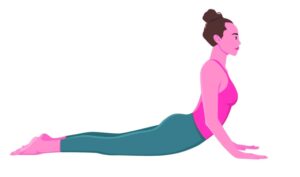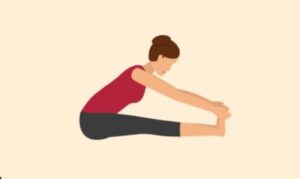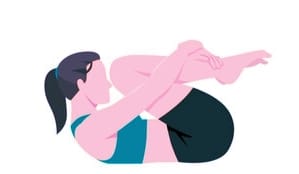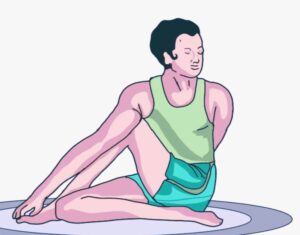YOGA ASANAS FOR DIABETES
Yoga asanas for diabetes- Diabetes is a condition when the blood’s level of sugar (glucose) rises rather than being utilized to produce energy. In other words, diabetes is a disorder in which the pancreas is unable to make insulin. The pancreas’ insufficient insulin production causes an excess of glucose to build up in the blood, which causes diabetes. Insulin, incidentally, is the hormone responsible for converting the sugar (glucose) content of food into energy. High glucose levels eventually have an impact on the body’s vital organs. Glucometer readings above 150 (after a typical meal) are harmful and should be checked.
Symptoms of diabetes
Fatigue, blurry vision, excessive thirst, excessive urination, weight loss, increased appetite, sluggish wound healing, and bad-smelling urine are just a few of the signs and symptoms of diabetes.
Causes of diabetes
The main factors that contribute to diabetes are genetic or hereditary, being overweight, kidney disease, gastrointestinal issues, drinking a lot of soda water or cold beverages, leading a sedentary lifestyle, using tobacco and alcohol, getting a little exercise, eating a lot of sweets, etc.
To curing diabetes by altering one’s diet while practicing yoga (asana, pranayama, and kriyas), Diabetes can be cured by the yoga asanas Bhujangasana, Paschimottanasana, Pavanamuktasana, Ardhmatsyendrasana, etc.
BHUJANG ASANA
Technique: It is also known as the Cobra stance. Start elevating your upper body while looking up while pro-lying and without the use of your hands. The preparatory asana is standing backward bending. The advanced form is Shalv-asana, Dhanur-asana. It is relaxed by Utthita Bal-asana or Vajra-asana, Kapal Bhati, etc.
Advantages:


- Prevents and treats obesity, asthma, and diabetes
- Enhances intestinal health and lowers.
- Helps in Developing stronger hand and abdominal muscles.
- Helps in Treating and rehabilitating postural abnormalities such as kyphosis and neck spondylitis.
- Improves the digestive functioning of the body.
Yoga asanas for diabetes
Contraindication:
Persons suffering from hernias, patients undergoing abdominal surgery, pregnant women, and the person having Back injuries should not do this.
PASCHIMOTTAN ASANA
Procedure: The other name is West Salute Pose or forward bending in sitting. It is performed by sitting with straight legs in front. Legs stretched forward and bending forward. The person tries to touch the forehead to the knees. The hands hold the feet without raising the knees from the floor. The preparatory asana Are Bal-asana or Janusirsasana or Adhomukhavirasana
Benefits:


- Prevent and cures Diabetic and Asthma patient.
- Controls weight and prevents obesity.
- Back and leg muscles are strengthened and relaxed.
- Cures gastric, indigestion, and constipation problems.
Contraindication:
A person suffering from Slipped Disc, Hernia, Enlarged liver, Spondylitis, and Intestine ulcers, and pregnant women should not do this.
https://www.sportzyogi.com/difference-between-growth-and-development/
PAVANMUKTA ASANA
It is sometimes referred to as the “Air Release Pose.” The stomach and intestines’ waste gases are released from the abdomen. With his or her feet together and arms by their bodies, the person in this asana lies on their back. With hands clasped, he or she should bend their knees towards their chest and place their thigh against their stomach. Lifting his/her head and chest off the ground, they should touch their chins to their knees. Breathing is done slowly and deeply. After this, either Matsya-asana or Shav-asana is a calming pose.
Benefits:


- Treats and prevents diabetes and obesity Improves digestion and lessens constipation and back pain issues
- Hypertension and back pain
- Treats and resolves postural issues such as back pain and neck spondylitis
- Relieves in Menstrual Disorder.
- Relaxes mind.
The following conditions are contraindicated: Asthma, advanced spondylitis, low blood pressure, and migraine patients.
ARDHA MATSYENDRA
It is also known as the half-spinal twist pose. Three Sanskrit words—Ardh, which means half, and Matsya, which means fish—were combined to create the asana known as ardh-matsyendra, also known as the half-fish posture. It is the most important asana. In this position, we sit with our legs crossed, with the foot of one leg resting on the hip joint of the other. While gazing back, the other hand supports the spine, while the opposite hand (of the lifted leg) presses the leg inward. The spine is upright while also being twisted. Bhardvasana is the preliminary pose, and complete Ardha-matsyendra asana is the advanced variation.
Benefits:


- Treats and prevents diabetes and obesity.
- The muscles in the back and abdomen get stronger and more toned.
- Improves glandular activity.
- Improves spinal flexibility and body shaping.
- Treats postural deformities like Bow-legs, Lordosis, Kyphosis, and Scoliosis. This is not recommended for those who have significant back pain, disc problems, hernias, piles, severe abdominal problems, or who are pregnant.
KAPAL BHATI
Procedure- Find a comfortable sitting position, close your eyes, and let your body relax. Take a deep breath in through both nostrils, opening up the chest. Relax after forcing fully contracting your abdominal muscles to expel your breath. In other words, during this pranayama, a deep, strong inhalation is taken, and a pressured exhalation through the nose is made while the stomach vibrates in and out. Continue to actively/forcefully exhale and inhale passively without straining.
Benefits:
- Prevents and treats obesity and diabetes
- Treats asthma, coughing, and colds.
- Eliminates digestive issues and gives abdominal organs a nice massage.
- Enhances glandular performance
Contraindications include those who have had abdominal surgery and pregnant women. It shouldn’t be done right after a meal.
Yoga asanas for diabetes





